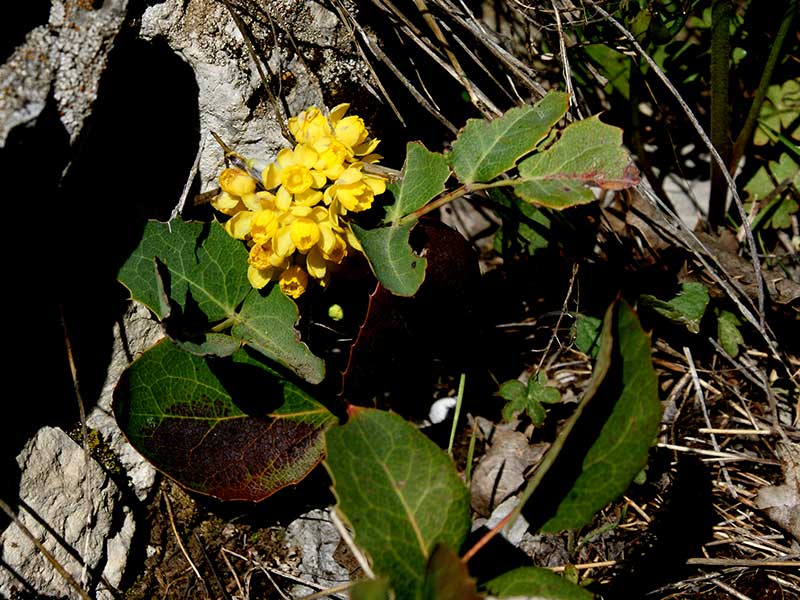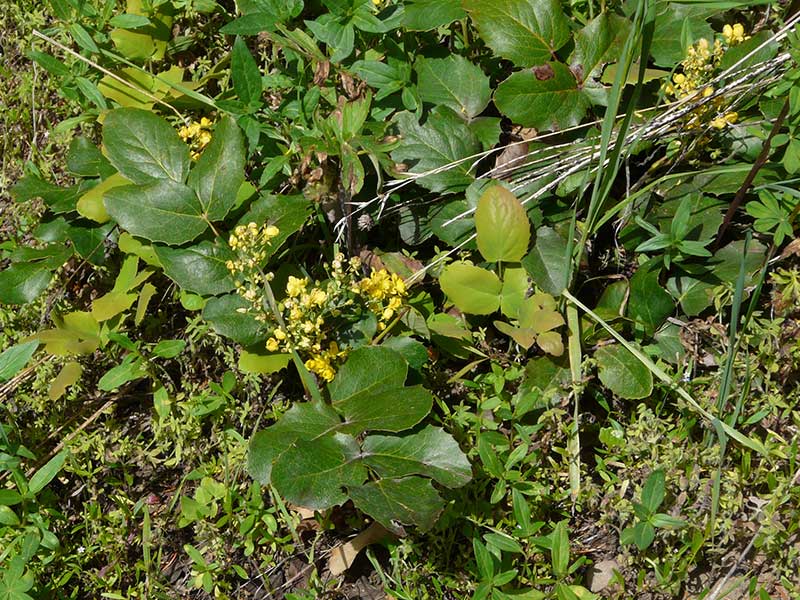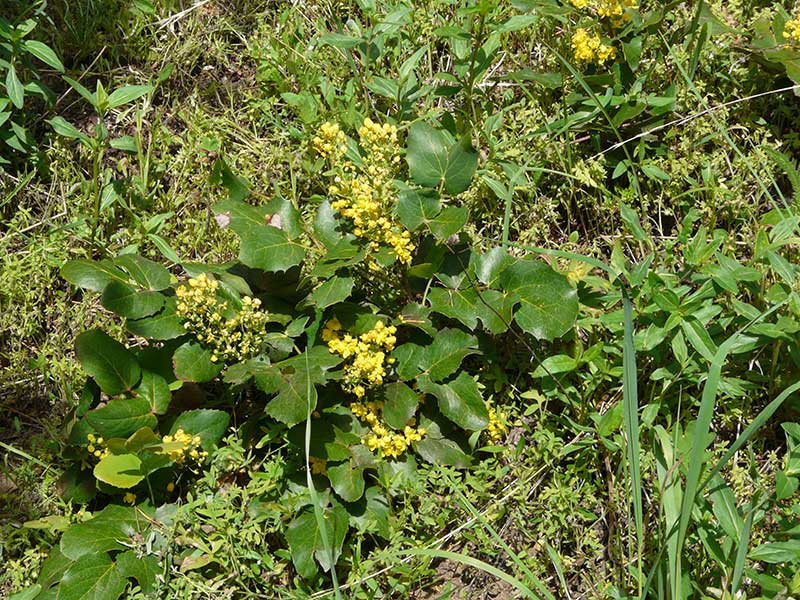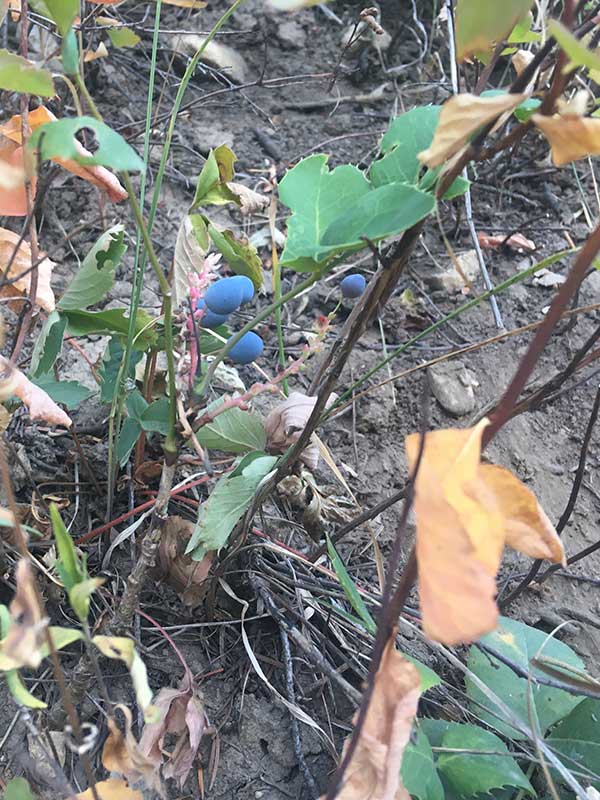Mahonia repens / creeping Oregon grape
- pinnately compound with toothed, holly-like leaflets
- clusters of yellow flowers in spring; blue berries in late summer
- low, creeping shrub
- evergreen – but winter leaves are reddish
Also known as: creeping mahonia, creeping barberry, prostrate barberry, holly grape, grape holly
Synonym: Berberis repens
Creeping Oregon grape is an evergreen ground cover shrub found open woods as well as on tree-free areas on mountains. It has deep green leaves in spring and summer, turning rusty red in the fall. These are very tolerant of winter sun exposure. The leaves are compound and the leaflets stiff and pointy like the better known English holly that features in Christmas carols and wreaths.
The flowers of Oregon grape are bright yellow and appear in tight clusters, technically dense racemes or umbels. They appear in mid-June in the Valley, and are fragrant and attract bees and butterflies. By mid-summer, the fruits appear. These are blue berries in grape-like clusters. The seeds they contain remain viable in the soil for at least a decade, but most propagation is by suckering.
M. repens spreads by rhizomes or by layering in a creeping fashion. Indeed, repens means “creeping”. The roots for this are rather close to the surface but other roots go several feet deep, providing water during drought.
Creeping Oregon grape grows in dry to moist foothill shrub lands as well as montane areas. It is tolerant of a wide range of precipitation, from the 20 or so inches we get to 140 inches in Oregon rain forests.
| Color | |
|---|---|
| Family | |
| Blossom size | |
| Inflorescence size | |
| Inflorescence type | |
| When? | |
| Where? | forest gaps and roadsides, pine forests, understory, widespread |




sm.jpg)